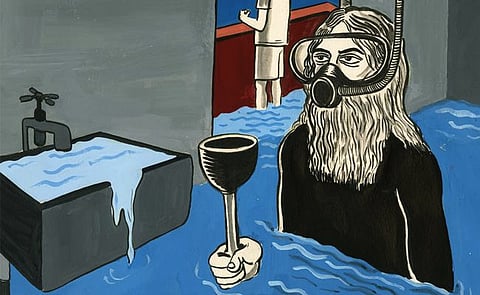Children of the transition
A strangely familiar world greets me on the cover of Sarnath Banerjee's The Harappa Files. There are two boys, in karate gi, one with a tiffin-carrier in hand and the other with a thermos. A woman, one chappal-clad foot flying towards the reader and a no-nonsense expression governing her face, holds their hands. The image is in colour, set against a brown backdrop. It is a sight that one might see in contemporary India, but it is more likely than not that today the three would be in a car, windows rolled up, FM radio on, perhaps with the children playing with handheld devices. Anyone who lives above the lower-middle class these days would like to have all those things – commodities that have created a rift with their own lives from three decades past.
The image resonates with India's children of the transition, those who were born in the 60s and early 70s, who experienced neither the excitement of the wave of independence nor the cataclysm of the wave of liberalisation. Most goods were out of reach, creating a longing for unavailable things advertised at the backs of imported comic books – shoes, jeans, cassette tapes, Twinkies, a Charles Atlas bodybuilding kit, x-ray glasses. In the first anthology from the graphic-novelists' group The Pao Collective, Sarnath Banerjee (born 1972) recalls his desire for Nike shoes. A relative from abroad brings our hero his used pair. The hero's father, "in one sweep of anger, disgust and embarrassment," throws them away. Then, one night, our hero spies his father, "an open copy of Sportsworld by his side, a size 3 Bata keds in his left hand and a clumsily held paint brush in his right. Blue ink on white canvas. Cheap bastard." Cheap, but nonetheless loving and – much like the erstwhile Indian government – desperately using techniques of reverse engineering and import substitution to generate commodities for a generation that seemed to want more regardless of the costs.

